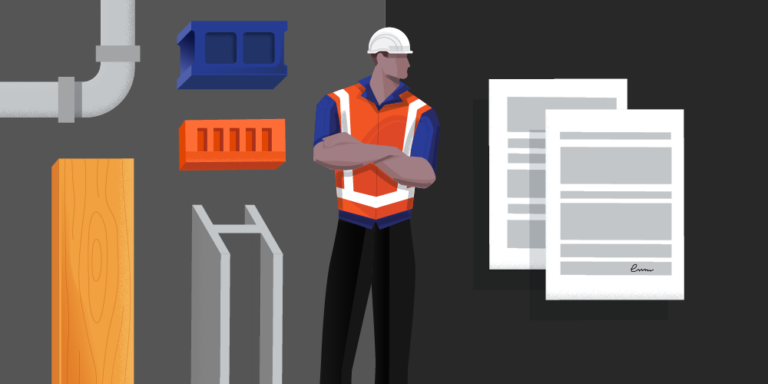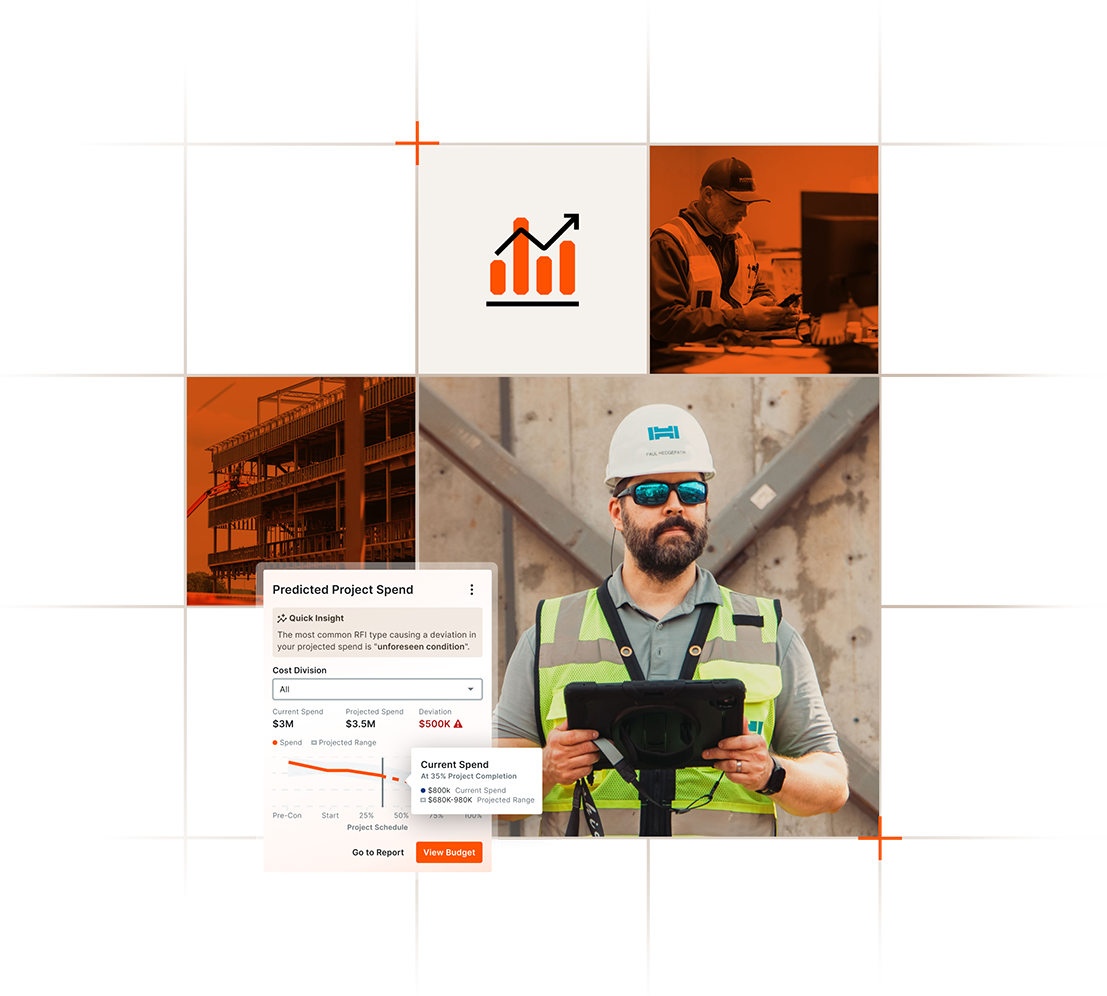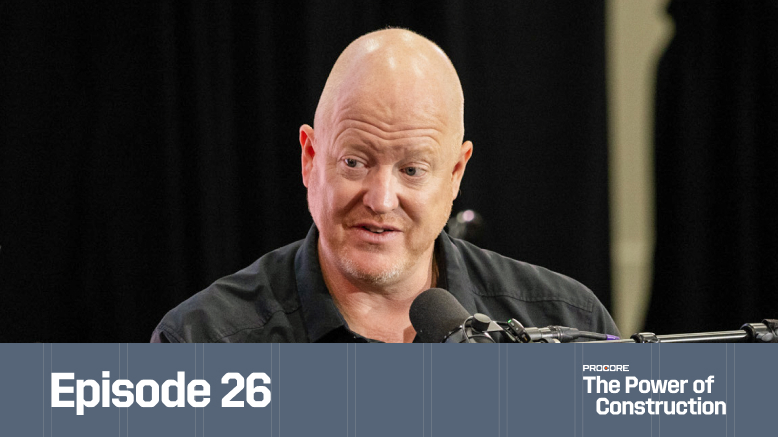— 8 min read
Balancing Hard Costs vs. Soft Costs in Construction


Last Updated Oct 3, 2025

Kelsie Keleher
Senior Strategic Product Consultant, General Contractors
13 articles
Kelsie is a Senior Strategic Product Consultant for general contractors at Procore; working closely with civil and infrastructure clients. Kelsie holds a Masters of Business Administration (MBA) and has close to a decade of experience in construction accounting and finance.

Taylor Riso
Contributing Writer
91 articles
Taylor Riso is a marketing professional with more than 10 years of experience in the construction industry. Skilled in content development and marketing strategies, she leverages her diverse experience to help professionals in the built environment. She currently resides in Portland, Oregon.
Last Updated Oct 3, 2025

On construction projects, there are two fundamental types of expenses: hard costs and soft costs. While both are integral to the completion of any construction endeavor, distinguishing between them is paramount to effective budgeting, financial management and overall project success.
Hard costs are the tangible expenses directly linked to the physical construction, including materials, labor, equipment and permits.
Soft costs refer to expenses that are essential for the successful completion of a project but are not directly tied to the physical construction of the building or structure.
In this article, we dive into the differences between hard and soft costs and explore strategies for budgeting and managing these expenses throughout a project’s lifecycle.
Table of contents
Hard Costs
In construction accounting, hard costs are expenses directly associated with the physical construction of a project. These expenses usually include the following:
- Subcontracts: payments made to subcontractors for specialized construction tasks.
- Materials: costs incurred for construction materials such as steel, concrete, lumber and roofing.
- Labor: wages and salaries paid to construction workers, including both skilled and unskilled labor.
- Equipment rentals/usage: expenses related to the rental or utilization of construction equipment, machinery and tools.
Examples of Hard Costs
Here’s some examples of common hard costs on a construction project:
- Foundation construction
- Framing and structural work
- Plumbing and electrical installations
- HVAC (Heating, Ventilation, and Air Conditioning) systems
- Interior finishes, including flooring and painting
Factors Influencing Hard Costs in Construction Projects
Several factors can impact hard costs in construction projects, including:
- Labor availability and wage rates
- Changes in project scope
- Weather-related delays
- Regulatory compliance requirements
The Role of Hard Costs in Construction
Hard costs typically constitute the largest portion of a construction budget and are the essential expenses needed to bring a project to fruition.
In the construction industry, hard costs serve as the building blocks of financial planning and control on projects. They provide the foundation upon which budgets are constructed and serve as a practical reference point for decision-making throughout a project's lifecycle.
Effectively managing hard costs offers a clear and tangible framework for budgeting, ensuring that the necessary resources are allocated to complete the project successfully. This helps project managers and stakeholders track expenses, minimize financial risks and keep projects on track.
Soft Costs
Soft costs are expenditures that are not directly related to the physical construction work but play a crucial role in bringing the overall project to fruition.
Common soft costs include:
- Legal and administrative costs: covering permits, legal fees, insurance and taxes.
- Design and development costs: including architectural and engineering fees, feasibility studies and site assessments.
- Financing costs: including interest on construction loans and loan origination fees.
- Operational and miscellaneous costs: such as project management fees, consultancy fees, and marketing expenses.
Examples of Soft Costs
- Architectural and engineering fees
- Permitting costs
- Legal fees
- Overhead allocations or general & administrative (G&A) costs
- Job site trailer
- Temporary utilities
How Soft Costs Impact Overall Project Finances
Soft costs have a significant impact on the overall financing of a project. While they may not directly contribute to the physical completion of the work, they are essential for project management, compliance and overall success. General conditions, a key component of soft costs, typically occur during the construction phase and cover essential operational expenses like site management, safety measures, and temporary utilities.
While most soft cost expenses arise in the predevelopment phase, general conditions are actually crucial during the construction stage of the project,as they contribute significantly to the overall budget. Ignoring or underestimating soft costs can lead to budgetary shortfalls and a variety of financial and other challenges.
Commonly Overlooked Soft Costs in Construction Projects
Despite their importance, certain soft costs are often overlooked or underestimated in construction projects. These may include expenses related to legal compliance, project management, and administrative overhead. Recognizing and properly accounting for these costs is essential to avoid financial surprises and ensure the project's overall financial health.
NOV 6, 2025 at 11:00 AM PST / 2:00 PM EST
Free Webinar: Prove your project management software is profitable
Join Procore and Dodge Data & Analytics for a 2025 Dodge ROI Report deep dive.

Comparing Hard vs. Soft Costs
In the realm of construction, understanding the differences between soft and hard costs is essential for effective financial planning and construction project management.
The Proportion of Soft to Hard Costs in Typical Construction Projects
On most construction projects, hard costs typically dominate the budget, constituting the majority of the expenses. These are the essential expenditures required to bring the project to life physically. Soft costs, while crucial, generally form a smaller proportion of the overall project budget. The exact ratio can vary dramatically depending on project size, complexity and type.
Timing of Soft Costs vs. Hard Costs in Construction Projects
Understanding when soft costs and hard costs occur in a construction project is crucial for effective financial planning and management. These two categories of expenses predominately align with distinct phases of a project's life cycle:
Soft Costs: Predevelopment and Planning Phase
Most soft costs are incurred during the predevelopment phase, which precedes the physical construction work. This early phase focuses on project conception, feasibility studies and initial planning. Soft costs during this stage encompass expenses related to permits, legal consultation, insurance, and design and engineering fees. These costs are vital for setting the work in motion, ensuring compliance with regulations and bringing the project to life.
As the project progresses into planning and design, additional soft costs occur. These include architectural and engineering fees for detailed specifications, surveys and site assessments. During this phase, soft costs play a significant role in translating ideas into actionable plans, ensuring the project is well-conceived and meets design standards.
Hard Costs: Construction Phase
The majority of hard costs come to the forefront during the physical construction phase. This is when the project takes shape, and expenses are directly tied to labor, materials, equipment, subcontractor services and on-site construction activities. Hard costs represent the core budgetary elements for completing the project as intended.
Understanding this timeline is essential for project managers, developers and stakeholders. It allows for effective allocation of resources, budgetary control and the identification of cost-related risks. Successful projects require a delicate balance between soft and hard costs throughout their lifecycle, ensuring that the necessary planning and resources are in place to bring the project to fruition efficiently and within budget.
Managing Soft and Hard Costs
Successful project management hinges on the effective budgeting, control and allocation of both soft and hard costs. Strategies for managing both of these cost categories are essential for staying within budget and ensuring overall project success. Let's explore how to navigate these financial aspects:
Strategies for Effectively Budgeting and Managing Hard Costs
- Create detailed cost estimates: Develop accurate and comprehensive estimates for hard costs, accounting for materials, labor, equipment and subcontractor expenses. Utilize historical data, industry benchmarks and expert insights to create realistic projections.
- Implement cost-tracking processes: Implement robust cost-tracking systems to monitor hard costs throughout the construction phase. Regularly review and adjust the budget as needed to avoid any overruns.
- Take a proactive approach to contract management: Negotiate and manage contracts with subcontractors, suppliers, and labor to secure competitive rates and ensure adherence to project timelines.
- Effectively manage subcontractors: Coordinate and oversee subcontractor activities to ensure their work aligns with project requirements, timelines, and budget constraints.
- Brainstorm value engineering options: Explore value engineering options to optimize hard costs without compromising project quality. This involves identifying cost-saving alternatives for materials, construction methods and design elements.
Approaches to Control and Minimize Soft Costs
- Engage in early planning: Begin soft cost planning during the predevelopment phase and establish a clear project scope. Efficiently managing the design and permitting processes can help to minimize delays and associated expenses.
- Vendor selection: Carefully select vendors, architects, engineers, and consultants based on their experience, efficiency and cost-effectiveness. Request competitive proposals and vet their qualifications to control soft costs.
- Risk management: Identify potential risks associated with soft costs, such as permitting delays or legal issues, and develop contingency plans to mitigate these risks.
- Streamline processes: Implement streamlined workflows and effective communication channels to reduce inefficiencies in soft cost management. Encourage collaboration among project stakeholders to expedite decision-making.
- Maintain relationships: Cultivate and maintain strong relationships with suppliers, contractors and regulatory bodies. Positive and cooperative relationships can lead to more favorable terms, expedited services, and reduced costs in areas such as permitting, procurement and conflict resolution, ultimately helping to keep soft costs down.
The Importance of Accurate Forecasting for Both Hard and Soft Cost Types
Accurate forecasting is paramount for both soft and hard costs to maintain financial stability throughout a construction project. For soft costs, accurate forecasting helps in securing necessary financing and ensuring that design and regulatory compliance expenses are adequately covered. Precise forecasting of hard costs, on the other hand, ensures that the construction phase stays on budget and avoids costly surprises, delays or overruns.
Utilizing tools such as S-curve modeling can provide a visual representation of cost projections over time, aiding in the accurate tracking and management of expenses. Additionally, implementing job costing systems with the integration of cost codes specifically tailored to the construction industry can further enhance this process. Cost codes, integrated into the general ledger, allow for the detailed categorization and monitoring of each expense, from labor and materials to equipment and overhead costs. This approach offers real-time insights and enables informed decision-making, ensuring that budget allocations are accurately maintained and financial performance is effectively monitored throughout the project's lifecycle.
Effective management of both soft and hard costs requires constant vigilance, proactive planning and flexibility to adapt to changing circumstances. Construction professionals who strike the right balance between these cost categories are well-equipped to deliver successful projects within budget and on schedule.
Stay updated on what’s happening in construction.
Subscribe to Blueprint, Procore’s free construction newsletter, to get content from industry experts delivered straight to your inbox.

Was this article helpful?
Thank you for your submission.
100%
0%
You voted that this article was . Was this a mistake? If so, change your vote
Scroll less, learn more about construction.
Subscribe to The Blueprint, Procore’s construction newsletter, to get content from industry experts delivered straight to your inbox.
By clicking this button, you agree to our Privacy Notice and Terms of Service.
Thank you!
You’re signed up to receive The Blueprint newsletter from Procore. You can unsubscribe at any time.
Categories:
Written by

Kelsie Keleher
Senior Strategic Product Consultant, General Contractors | Procore
13 articles
Kelsie is a Senior Strategic Product Consultant for general contractors at Procore; working closely with civil and infrastructure clients. Kelsie holds a Masters of Business Administration (MBA) and has close to a decade of experience in construction accounting and finance.
View profile
Taylor Riso
Contributing Writer
91 articles
Taylor Riso is a marketing professional with more than 10 years of experience in the construction industry. Skilled in content development and marketing strategies, she leverages her diverse experience to help professionals in the built environment. She currently resides in Portland, Oregon.
View profileExplore more helpful resources

Bid Management Software: Key Features & How to Choose the Right Fit
Bidding on construction projects can be a complex process. Sourcing appropriate bids and requests for proposals, analyzing bid documents, making sure estimates, preliminary schedules, and other mandatory requirements are met...

From “What Is” to “What If” in Construction
In this episode of The Power of Construction, futurist Nikolas Badminton challenges the industry to reimagine what’s possible when we move from “what is” to “what if.” Rather than planning...

Transforming Construction Project Management With Predictive Analytics
Construction leaders who can correctly identify project challenges before they arise can more easily sidestep them. This saves time, money and significant delays. Predictive analytics attempts to forecast future outcomes...

Capital Project Management: A Quick Guide for Construction Pros
With aging infrastructure and new technology needs, capital projects will remain a high priority for communities around the world in the coming years. Effectively managing capital construction projects is necessary...
Free Tools
Calculators
Use our calculators to estimate the cost of construction materials for your next project.
Templates
Find a template to help you with your construction project tasks.
Material Price Tracker
Get the latest U.S. retail prices and view historical trends for common building materials.
Glossary
Explore key terms and phrases used in the industry.
